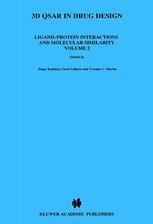

Most ebook files are in PDF format, so you can easily read them using various software such as Foxit Reader or directly on the Google Chrome browser.
Some ebook files are released by publishers in other formats such as .awz, .mobi, .epub, .fb2, etc. You may need to install specific software to read these formats on mobile/PC, such as Calibre.
Please read the tutorial at this link: https://ebookbell.com/faq
We offer FREE conversion to the popular formats you request; however, this may take some time. Therefore, right after payment, please email us, and we will try to provide the service as quickly as possible.
For some exceptional file formats or broken links (if any), please refrain from opening any disputes. Instead, email us first, and we will try to assist within a maximum of 6 hours.
EbookBell Team

4.7
36 reviewsSignificant progress has been made in the study of three-dimensional quantitative structure-activity relationships (3D QSAR) since the first publication by Richard Cramer in 1988 and the first volume in the series. 3D QSAR in Drug Design. Theory, Methods and Applications, published in 1993. The aim of that early book was to contribute to the understanding and the further application of CoMFA and related approaches and to facilitate the appropriate use of these methods. Since then, hundreds of papers have appeared using the quickly developing techniques of both 3D QSAR and computational sciences to study a broad variety of biological problems. Again the editor(s) felt that the time had come to solicit reviews on published and new viewpoints to document the state of the art of 3D QSAR in its broadest definition and to provide visions of where new techniques will emerge or new appli- tions may be found. The intention is not only to highlight new ideas but also to show the shortcomings, inaccuracies, and abuses of the methods. We hope this book will enable others to separate trivial from visionary approaches and me-too methodology from in- vative techniques. These concerns guided our choice of contributors. To our delight, our call for papers elicited a great many manuscripts.